By Joe Baker, Tourism HR Canada Board of Directors
I am a person living with a disability. I have a visual impairment caused by cancer treatment I received when I was a child. At a very young age, I was diagnosed with a brain tumour that required radiation therapy to my head. This immediately and significantly damaged the vision in my right eye. More than forty years later, and two weeks into my new job as Dean of Business at Okanagan College earlier this year, my right eye finally gave up and I lost what was left of the vision in that eye.
Mine is not a bad news story. I am one of the lucky ones who gets to live a life beyond cancer and partial vision loss. I get to fight for independence, health, and a fulfilling life. And I get to learn how to ask for help where I need it and how to offer it where I can. I need help reading text, recognizing colour, and following visuals. And on top of this, I need help with representation—seeing other people with disabilities in photos and videos.
On Canadian Disability
The 2022 Canadian Survey on Disability (CSD) found that 27 per cent of Canadians aged 15 years and older, or 8 million people, had one or more disabilities that limited them in their daily activities. The rate of disability in Canada has increased by 5 percentage points since 2017.
Like so many cross-sections of our population, people who report disabilities do not come from a homogenous group. There is as much diversity within our population of people with disabilities as you would see within our able people. Statistics Canada outlines the different categories of people with disabilities in the chart below. This is important as we attempt to understand our disabled population and how we can engage them in our workplaces and broader society.
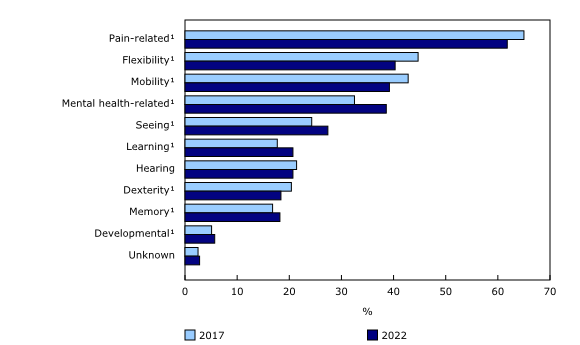
Source: 2022 Canadian Survey on Disability (3251).
People with disabilities often have multiple co-occurring disability types. In 2022, 29 per cent of Canadians with a disability had one disability type, 37 per cent had two or three, and 34 per cent had four or more.
Visually Appealing
So for me, and many people who identify as those with seeing disabilities, I struggle engaging with print and digital content. Things that are important to me are contrast, size flexibility, alternative text, and embedded subtitles in video or audio content. And what I really appreciate seeing is representation from people with disabilities as a reminder that we too are capable of anything.
Leading the Way
Recently, Tourism HR Canada underwent an accessibility audit of their content and digital assets. This was made possible partly due to funding from the Government of Canada’s Opportunities Fund. But this was also made possible because the people who run this organization genuinely care about being an organization that is values driven. They have taken many initiatives to promote and foster belonging as an extension of their commitment to inclusivity, diversity, equity, accessibility, and leadership.
The audit reviewed and provided accessibility recommendations on the website, social media content, eNewsletter, videos, photography library, eLearning, publications, and more. Training covered not just what to do, but WHY to do it. Many recommendations have now been rolled out, anchored by new, accessible branding.
The elements of their new brand standards that really stand out to me are the updated colour palette which create the visual contrast, the re-creation of their brand marks and logos, the adaptability of their web content, and the embedded subtitles in their videos.
Below are a few examples of the before and after of their logos and brand assets. Take a moment and see if you can identify what was changed. Try to imagine struggling with colour blindness and other visual impairments. These updates promote a visceral reaction in me. I feel relieved I don’t have to strain my eyes and brain or cut and paste and modify them so I can read and see them.


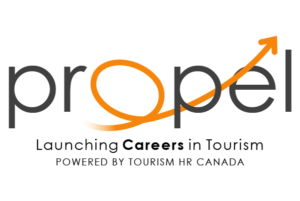
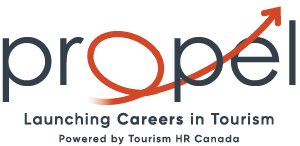
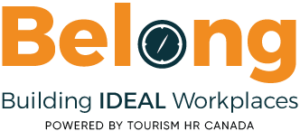
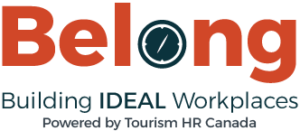
Wrap and Resources
I understand that not every organization out there has the time, money, or resources to make everything they do completely accessible. And I understand that the diversity within the world of disabilities makes it difficult to be everything to everyone. But it is possible. And for those looking for a living embodiment of an organization that brings values to life, look no further than Tourism HR Canada. To the team involved and on behalf of more than a quarter of us Canadians with disabilities, I thank you for modelling the way.
To experience Tourism HR Canada’s new accessible brand standards, click here.

